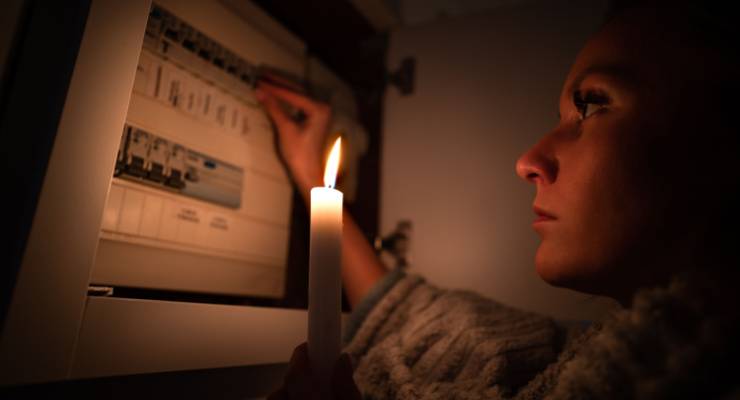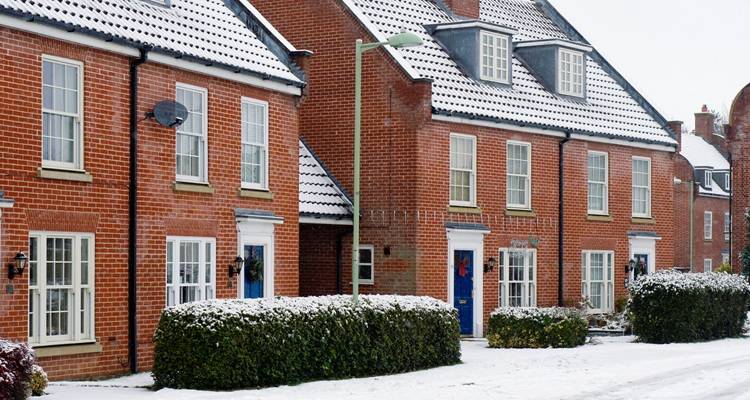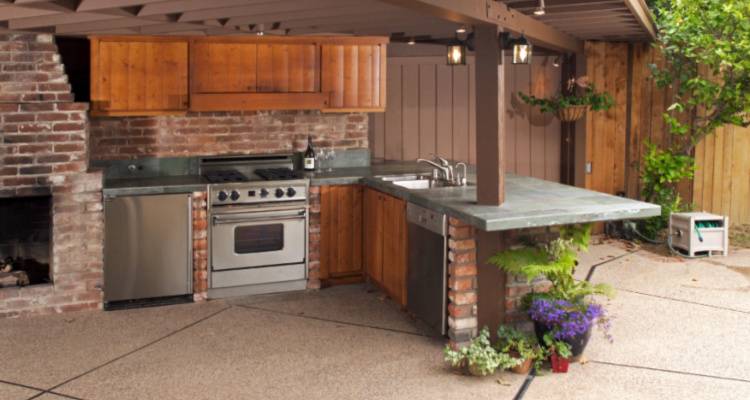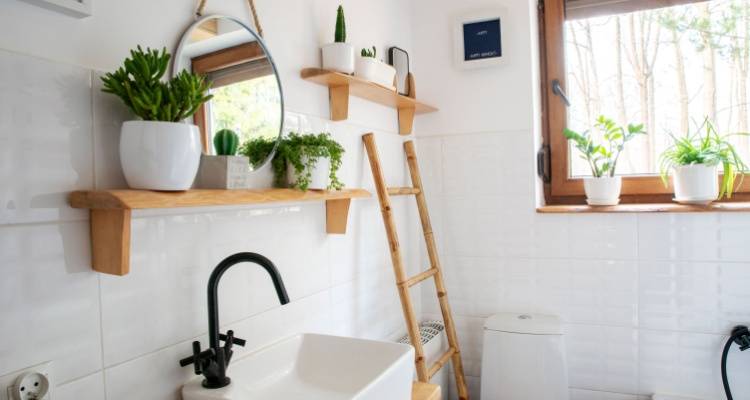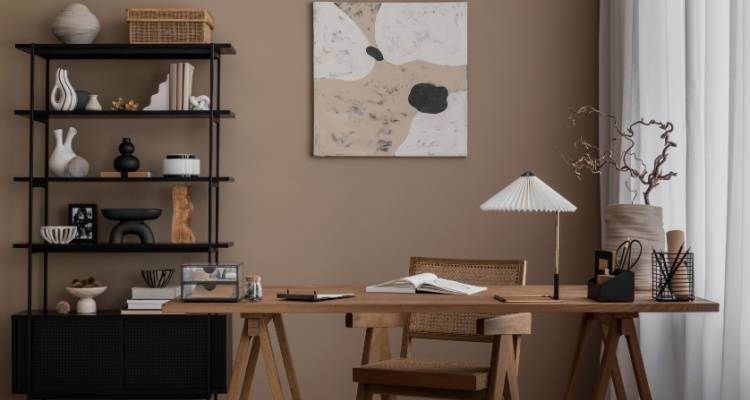Beginner’s Guide to Improving Home Security
Are you searching for the best ways to improve your home security?

The following guide will explore topics such as what home security is, types of security alarms, window security and security lighting. This article will prove very useful if you plan on updating your home security systems.
Table of Contents
- What is Home Security?
- Planning Your Home Security
- Security Alarms
- Security Cameras
- Windows Security
- Security Doors
- Security Locks
- Security Lighting
- Secure Your Valuables
- Garden Shed Security
- How to Prevent Burglaries
- Conclusion
- FAQ
What is Home Security?
Let's first break down what home security is and what it entails.
Home security is a combination of personal security measures like locking doors and closing windows and home security hardware, whether it be a house alarm, home security cameras or security lighting. The value of home security is not only in protecting your home from theft.
It can also protect against fire and dangerous gases (e.g. carbon monoxide), give you a strong sense of comfort and reassurance and deter criminals from trying to break-in to begin with. Without sufficient home security, there is a higher risk of a house invasion. Not only can home security alert you of possible intrusion, but the sight of security systems can deter any potential intruders.

While any household occupant should use high standard home security, there is arguably more of a need for home security for the more vulnerable whether it is those living on their own, with mobility issues or for those living in very isolated areas.
Home security has changed a lot over the years. During the 19th century, the first house alarms were popularised. Pre-modern forms of home security included house locks, guard dogs and watchmen.
The 20th century saw major progress in home security as house alarms became increasingly commonplace before CCTV was invented and became commercial in the second half of the century. Nowadays, home security technology is a far cry from the simple security measures of the past and new technologies, devices and systems are being developed with a bright and promising future for home security.
Home security is essential to keep you, other household occupants and your material goods safe. Thankfully, in 2020 there are plenty of advanced and innovative ways to maximise the security levels of your home.
Planning Your Home Security
It's important to plan out your security based on where improvements are needed the most. In this section, we'll take a look at how to plan home security, standout security risks within a property and what you should take into consideration when trying to improve your home security.
Your plan should be strategically smart and ensure that everything is arranged in such a way as to give you the best chances of deterring or catching home invaders.
You want to plan out your home security approach so that activity outside your home can be lit up, ideally with motion sensor lights for your front and back gardens. Window and door sensors that can detect outdoor motion are also worthy investments as are security systems designed to pick up on smoke and gases.
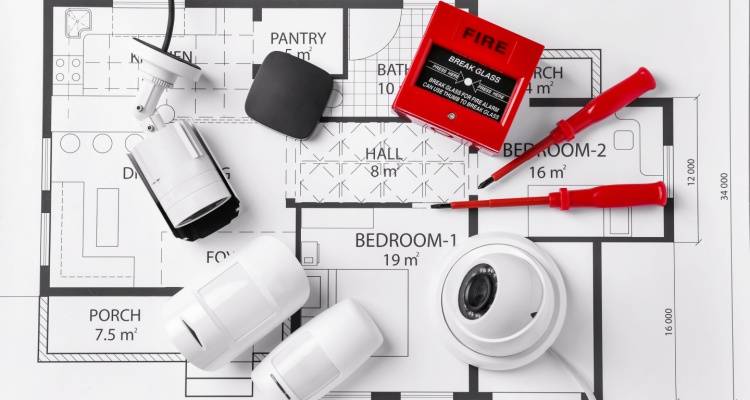
Modern wireless security systems can improve your home safety even further. As for strategy, you should place your control panels out of sight from the outside of your property and in a spot that is accessible to you should you ever find yourself in a situation where you need to use a panic alarm. The larger your gardens, the more lighting you may need as you don't want to risk blind spots that any motion sensor lighting could miss.
There are many security risks within any home that could leave you vulnerable to trespassers. Windows and doors are notable risks as many burglars will attempt to pry open or smash their way in through a window or door. It's also important to ensure that your alarm system has power and is fully functional.
Old wooden doors and windows & doors which are not fully secure are examples of high-risk areas. If you have a side entrance, the alleyway it leads into would also be a high-risk area, especially if there is a side house window along the house wall. If you have a side alley, you should fit motion sensor lights along this area too and ensure any window(s) along the side of the house are fully secure.
Security Alarms
There are many types of security alarms to choose from. Put simply; a security alarm is designed to produce loud sounds when intrusion is detected. This is in order to alert property occupants or/and neighbours as to a potential security breach.
Burglar alarms comprise a series of electrical components in and around a property. They use sensors and contacts to pick up on motion or/and doors and windows being opened. If there is a breach of the alarms security measures when it is on, it will be set off. In terms of the alarm sound itself; usually, this is achieved mechanically as the voltage applied to the transducer will cause it to flex, enabling a loud sound to be produced. Alternatively, some alarms produce sound without mechanical means.
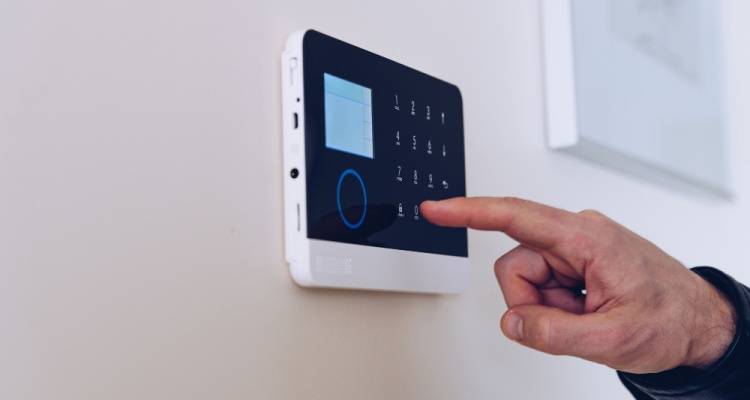
Some modern security alarm systems can also wirelessly alert the authorities and/or property occupants as to a potential encroachment.
Security alarms are a vital element of any good home security. They act as one of the primary lines of defence against burglars. It may also deter burglars who are trying to find a house with minimal security and possibly one without a functioning alarm. Many burglars will survey different areas for vulnerable properties, and the stronger your security looks, the less likely they are to target your home.
Types of Security Alarms
Let's now take a look at various types of security alarms, including with a breakdown of relevant facts such as how easy they are to install.
Monitored Alarms
These alarms communicate with a security team should any security breaches be detected. In addition, in some cases, emergency responders will be notified. It's a great option for those whose property is left unoccupied for many hours on end throughout the day.
It can also provide any property occupants more peace of mind when they are out and about, especially if they are not at home for an extended time period. It can be used at any time, but the monitoring element is most useful for when the house is empty. As a more complex security alarm, its installation will be a bit more challenging, and you'll likely need to hire a professional contractor for this job.
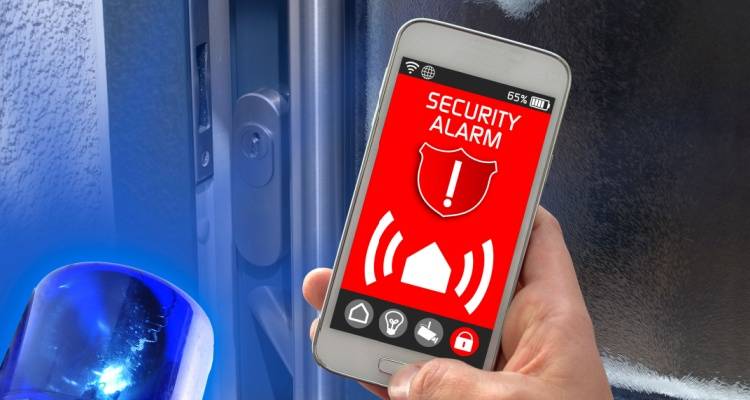
Using it is quite straightforward, although, like many alarms, it needs to be set before you leave your home. Aside from frequently unoccupied properties, monitored alarms are well suited to properties which are otherwise more vulnerable to break-ins and if you live in an area prone to power outages.
In regard to the latter point, this is because plenty of monitored alarm systems are designed to continue working through landlines or cell phone networks even if the power has gone off. One downside to monitored alarms is that you will need to pay a monthly or yearly charge for the services of a monitoring company.
Bells-only Alarms
Traditional bell alarms (which may or may not be monitored) work by sounding a loud siren. Unlike silent alarms which are designed to notify the local authorities without making a sound, these alarms create plenty of noise so that anyone present in the property or nearby neighbours will become aware of a possible home invasion.
They are ideal for those with poor hearing since if they missed the sound of someone breaking in downstairs, with even limited hearing function, they should be able to hear the alarm loud and clear. They are also well suited to houses in densely populated and cooperative neighbourhoods. In such cases, it's more likely that should the alarm go off, someone nearby will watch the house for signs of burglary or/and contact you or the emergency services to give notice of a potential break-in.
Bell alarms can be fitted in practically all cases. However, it's important to ensure that it does not become a nuisance. This is especially important considering that false alarms are far more common than actual break-ins. Bell alarms are easy to use and install. They are best suited to properties in locations with plenty of people around and are perfect if you need a simple and low-cost alarm.
Wired Alarms
Most alarms are wired into the house's power supply. Wired alarms connect the sensors to the control panel with a series of wires. Your property's telephone line may also be used if the alarm is monitored. It enables a siren to be set off by sending signals to it via its wiring network. A wired alarm is not a bad choice if you'd like to replace an old wired alarm since the previous alarm's wired infrastructure will likely make the installation relatively easy.
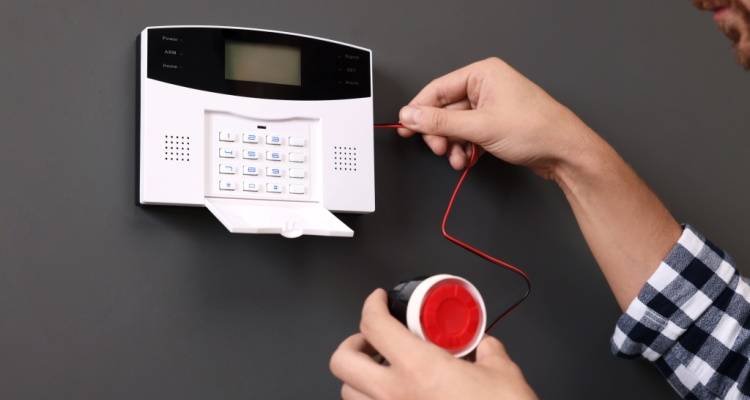
With that being said, if there are issues with the wiring or there is no pre-existing wiring for this type of alarm, then a new installation will prove quite complicated. In fact, it could take two days or more. A wired alarm can be used in most properties once there are no functional or safety issues with the electrics of the property.
They are easy to use and best suited to situations where you need to replace an old wired alarm. Further, wired alarms would be a smart choice if you want a monitored alarm but live in a more rural area with limited or intermittent cellular coverage. This is because monitored wireless alarms depend on a cell phone network to communicate with a security team or/and the emergency services should they detect a possible break-in.
Wireless Alarms
For a more modern option, you might like to have a wireless alarm fitted. With this type of alarm, its sensors are designed to communicate with the control panel wirelessly, generally via a radio frequency.
If an intrusion is detected, a wireless alarm will send a signal to set off the siren. It may also alert the home's occupant(s), a monitoring security team, if applicable or/and the emergency services. This can be done via a cellular network. If your home does not have the correct, functioning or/and safe wiring network to easily fit a new wired alarm, then this option might be for you. This is because without the necessary wiring in place, a wireless alarm fitting would be easier and faster.
Wireless alarms are a great option in such a scenario, and they are also perfect for locations with great cellular coverage. On average, it takes about five hours to have a wireless security alarm fitted. Most modern wireless alarms are also designed for ease of use.
Smart Alarms
A smart alarm utilises wireless technology, the use of mobile phones and home networks to integrate your home security with your daily life.
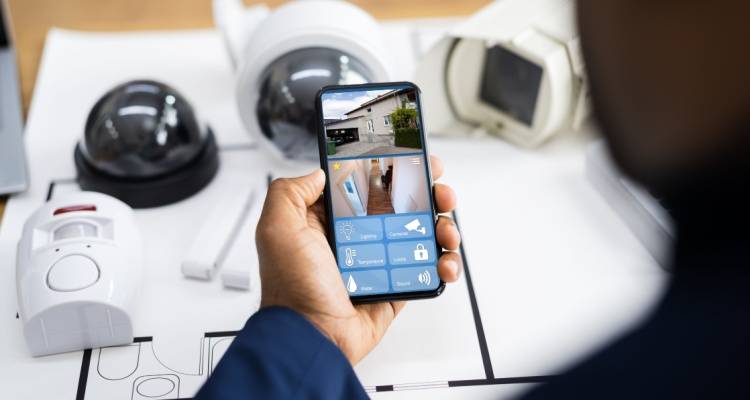
For example, a smart alarm may be connected to a smart security camera such that if the alarm goes off, it will pick up information from your CCTV simultaneously. Smart alarms are a great way to optimise your home security. They may or may not require a Wi-Fi connection and a reliable one at that, but it will depend on the product. They are usually easy to fit and use. Preferably, you should fit a smart alarm in a smart house, although they could also act as the first smart feature of your home.
Security Cameras
A great addition to a security alarm is an effective security camera. A security camera or CCTV is a closed-circuit camera designed to record an area surrounding a property so that any suspicious activity, attempted break-ins or burglars can be filmed.
Security cameras film over a given time period and save the footage usually on their internal hard drive. In most cases, they will automatically delete old footage after a fixed timeframe (e.g. 24 hours) and then start recording again.
They are a great way to secure a property since if, for example, you or any neighbours noticed suspicious activity outside your home, you could look over the CCTV footage to investigate it further. They are also a good way to deter burglars as they are less likely to attempt a break-in if a home has a high level of security, including if CCTV is evidently in use.
Types of Security Cameras
Wireless CCTV
These types of security cameras connect to your Wi-Fi without the need for a wired network. However, they may still actually have wires connecting them to the mains. So, they aren't necessarily wireless unless they are battery-powered. In some instances, wireless CCTV will be capable of sending a live video feed to another device or/and store recordings via the cloud. In other cases, they will use an SD card.
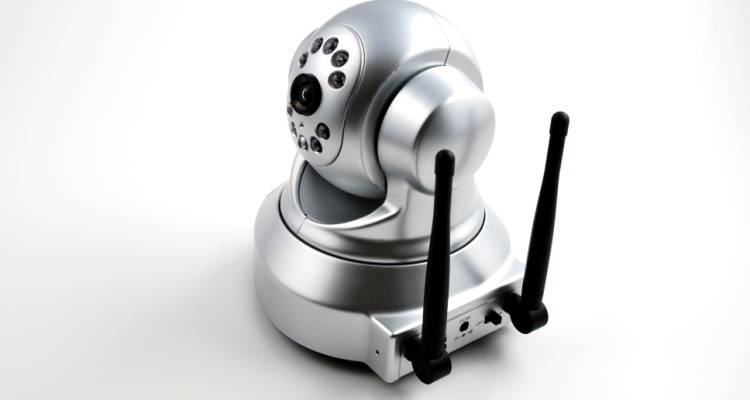
There are two main types of wireless security cameras, namely digital wireless CCTV and analogue wireless CCTV. The former is more secure as it can be encrypted quite easily while the analogue version is more susceptible to hacking. Wireless CCTV cameras are actually relatively affordable for the most part. They're also great if you want a security camera that's easy to install and move. You'll usually need access to Wi-Fi for wireless CCTV, so preferably, you shouldn't go for a wireless security camera if you live in an area with poor or unreliable Wi-Fi.
Dome CCTV
As the name suggests, dome security cameras are enclosed in a dome-shaped casing. They are primarily used due to how discreet they are. Due to their transparent protective casing, they tend to be more durable and resistant to vandalism.
In addition, it can be more difficult to tell which way a dome security camera is pointing. It's a great choice if you are looking for CCTV with night vision and that which is weatherproof. Dome cameras are a bit trickier to install than say bullet cameras, which we will get to next. Dome security cameras also need to be remounted if you want to change their view. This type of CCTV is best suited for those looking for a discreet security camera.
Bullet CCTV
The name of bullet cameras is owed to their unique cylindrical shape. Unlike dome cameras, they are designed to be highly visible and to, therefore, act as a deterrent against possible home intrusion. Since bullet cameras have a long-range, they are well suited to viewing large areas such as if you have a sizeable garden or driveway.
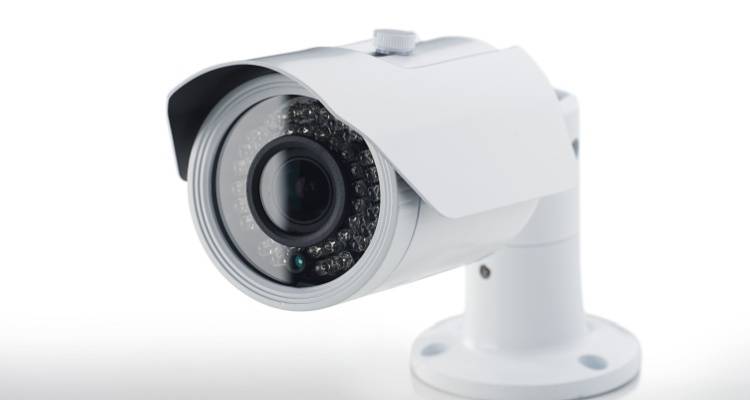
A bullet camera can be used as long as you are not looking for an obscure security camera. Since bullet cameras come with a mounting handle, they are easier to install than dome CCTV. They are also easy to use once fitted. For example, you can easily position and reposition the camera lens to watch over a given area of your choice.
Day/Night CCTV
Day and night CCTV can be wired or wireless, dome or bullet. With night vision capabilities, they can run 24 hours a day with minimal nighttime viewing issues. They often come with built-in infrared to capture any activity surrounding your home, even at the dead of night. They are ideal if you live in a poorly lit area or/and do not have motion-responsive security lighting. Day/night CCTV is generally easy to install and use, but it will depend on the design being used, such as whether it is a dome or bullet camera. Many rural homes can benefit especially from the use of day/night CCTV.
Infrared CCTV
As discussed in the previous section, many day/night security cameras come with infrared capabilities. Infrared CCTV is suited to practically any property. Since they are bright and powerful, however, their view can be obstructed by reflective surfaces which can cause viewing problems. You should only use infrared security cameras outdoors unless you have a large open space with few to no reflective surfaces.
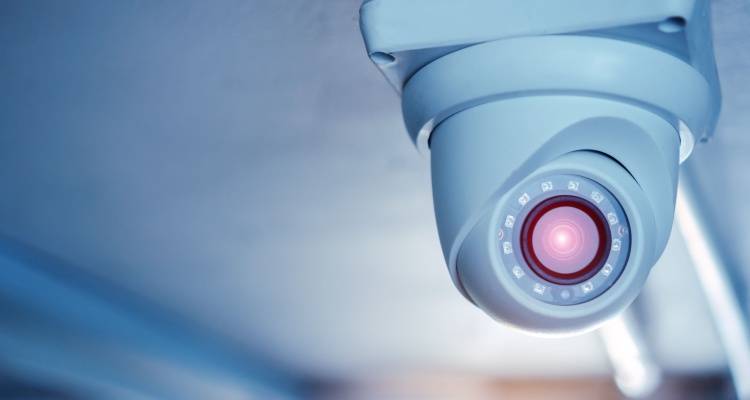
Either way, infrared CCTV is best suited to outdoor use. Installation is usually straightforward, although it will depend on factors such as if you are purchasing a dome or bullet infrared security camera. Once they are fitted in the right place, infrared CCTV is easy to use. Infrared CCTV as with day/night CCTV is a good choice if you live in an area that has poor lighting or/and you don't have motion sensor security lights.
Network/IP
Network or IP security cameras are digital cameras which can send its control data over an Internet Protocol or IP network. Thanks to its network connections, with many IP security cameras, you can receive notifications wirelessly if your alarm has been set off and the camera is connected to a smart alarm via a network. Many of the previous types of CCTV mentioned could be network/IP CCTV. IP CCTV is a good choice for you if you want modern security cameras with advanced capabilities.
They also provide a high-quality image, reliability and durability. Its installation is simple, and you can get the camera online in just a few minutes. IP CCTV is also easy to use. IP security cameras are well suited to homes with a reliable internet connection. They are also a good choice if you want to maximise your home's security.
HD CCTV
Another modern type of security camera is which films in HD. There has long been a stereotype of CCTV having especially poor quality, but that is no longer true, at least not for all CCTV. Nowadays, there are plenty of HD security cameras on the market. Unlike traditional CCTV, they can film in 1080p, providing a high-quality, pristine image.
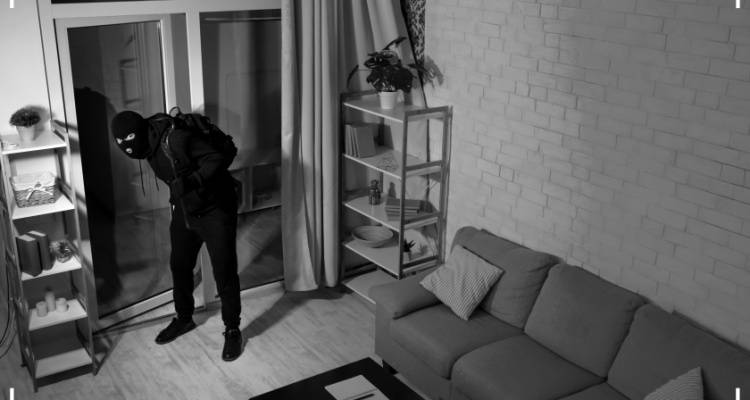
With the ability to film with twice the range and almost three times the width of stand definition security cameras, HD CCTV is perfect if you are looking to optimise your home security. HD CCTV is generally easy to use and install although it will depend on its specific design (for e.g. is it wired or wireless?). HD security cameras are great for capturing large open spaces.
C-Mount
While C-Mount security cameras are not as popular as bullet CCTV, they are still a great design worth considering. C-Mount cameras are large and can easily be adapted to modern technology.
For using C-Mount CCTV outdoors, you'll need a housing and a mounting bracket too therefore if fitted outside; they can be a bit more challenging to install. Generally, they are easy to use. C-Mount cameras are a great choice if you need a deterrent-type camera, just like with dome CCTV.
While they are often used by businesses, they are a great choice for properties which need to significantly improve their level of deterrence. An evident alarm and visible security camera are a great combination for achieving this.
Pan & Tilt
This type of security camera is a great hi-tech option. As the name suggests, these cameras can pan & tilt and also often zoom on command. This will enable you to gain a greater view of the area surrounding your home.
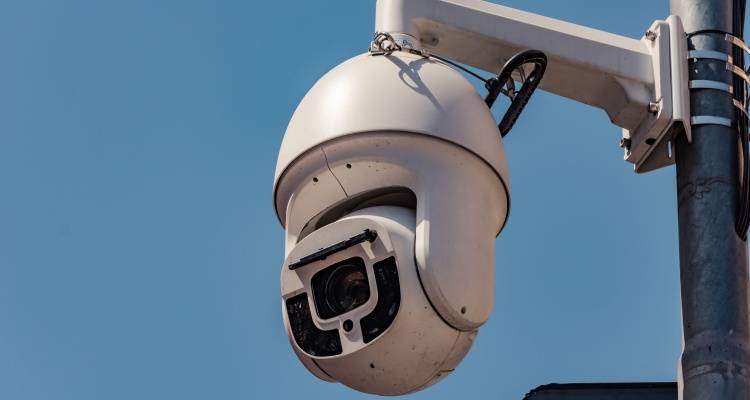
Most of these cameras come with apps so that if you hear a noise outside, you can take a look at your camera's view and move it around to survey the scene for signs of suspicious activity. If you want to improve your sense of security and to have a great capacity for surveilling the areas outside your house, a pan & tilt camera is an ideal choice. Installation and use are generally painless. Pan & tilt CCTV are well suited to properties with large open spaces around them.
Some pan & tilt cameras also have infrared capabilities making them a good choice for rural and poorly lit areas too.
Smart CCTV
As mentioned in previous examples, many modern security cameras have smart capabilities. Plenty of modern Wi-Fi-enabled CCTV allows you to view your security camera remotely on a device such as a phone. Smart CCTV is usually not difficult to install or use. Smart security cameras are a great way of improving your home security.
However, it is important that you live in an area with a good internet connection. Many homes could take advantage of smart security cameras to create a greater sense of security and to increase the chances of catching potential burglars or identifying them should a break-in ever happen.
Windows Security
As the saying goes, a chain is no stronger than its weakest link. When it comes to home security, it's important to remember that doors and windows are potential weak spots in defending your home against potential intrusion.
There are plenty of ways you can optimise window security at home such as by introducing window bars, reinforced glass, window locks and window restrictors.
Window Bars
Essentially, window bars are metallic grids which are fitted in front of a window frame. Usually, they are bolted or screwed in place. There are several types of window bars: swing away bars, permanent bars and removable bars.
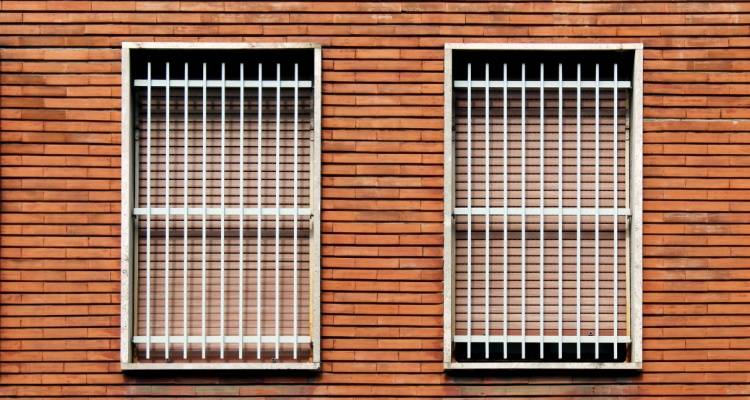
Not only do window bars make it far harder to break into a property, especially if the property also has a high degree of door security, but they also act as a great deterrent. Window bars or grills are suited to virtually any type of window.
Reinforced Glass
If you find the thought of window bars too visually unreceptive, you may be interested in having your window glass reinforced. Examples of reinforced window glass include laminate and toughened safety glass. Another option is tempered glass. These types of glass offer more strength and durability than regular window glass.
They can be fitted to practically any window type. For the installation of reinforced glass, first, the old window panels must be removed. Then the putty needs to be removed and the frame cleaned. The new glass will need precise measurements before being fitted. Next, a new putty can be applied and the window set. A new glazing compound should be applied before the window frame may or may not be painted.
Window Locks
These locks can be fitted to a window to increase security further. Without window locks, it may be possible for an intruder to pry open a window; thus, they may not even need to smash the actual window glass to break in.
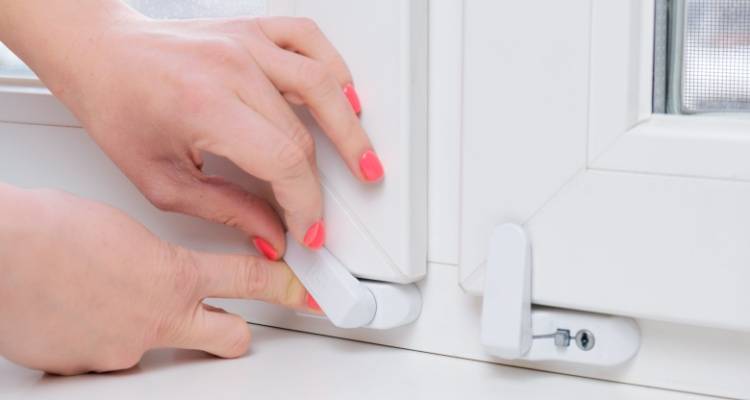
There are many types of window locks including window latches, keyed locks, lag screws, sliding window locks, window pin locks and folding latches. It is best practice to have a mix of different locks fitted to your windows to maximise security.
Window locks work by moving a lock element across two or more parts of the window such that opening the window when it is locked becomes extremely difficult. Ideally, you should have locks on every window in your home, although upstairs windows are less vulnerable than those downstairs.
Security Film
An alternative to reinforced glass is the addition of a security film. It acts as an additional layer of protection designed to strengthen windows. They are available in various grades and finishes and are usually practically invisible. For the installation of security film, it's vital that the window glass is cleaned thoroughly. Soapy water, a scraper and finally a squeegee can be employed for this part of the job. Some tissue can also be used to wipe off any soapy water remaining around the edges of the glass.
The film should be laid out on a clean surface, measured and cut slightly oversize with sharp scissors. Two pieces of sticky tape should then be used to remove the backing sheet of the film. Spraying the backing sheet with soapy water before fully pulling it away will expose the adhesive.
Once the backing sheet has been peeled away, you may spray the film with soapy water entirely. Next, the window glass can be sprayed before the security film may be laid against its surface. A spray can be added once fitted and then the soapy water may be removed with a squeegee.
The excess security film can be cut off before soapy water should be reapplied and removed once again with a squeegee. This is a broad approximation based on a popular security film product, and the exact requirements may vary from product to product.
Security Doors
Unlike a regular door, a security door is generally much stronger, even impenetrable, more durable, provides a more advanced and effective locking system and may be customised which can improve security further. They tend to be made from a strong metallic material like steel or wrought iron or from ordinary timber or fibreglass. Some security doors are also semi-electronic.
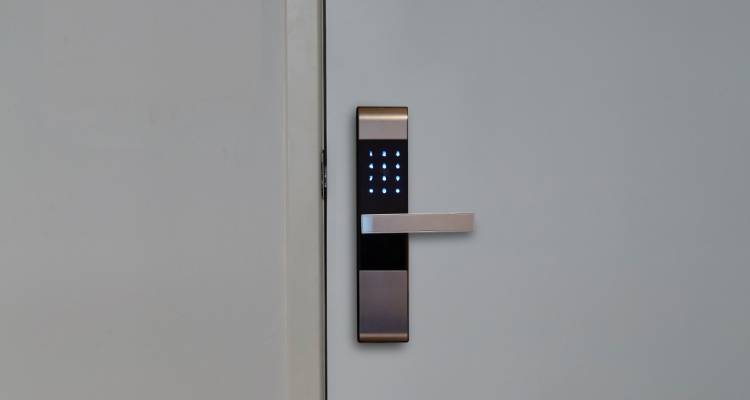
For purely mechanical security doors they work based on the same principles as ordinary doors but with added elements (for e.g. additional locks). An electronic security door, on the other hand, is opened with an electronic entry device such as a keypad or card. The sheer strength of security doors makes them much harder to break in through than regular doors. This and their long-lasting qualities make them the perfect choice to heavily secure an otherwise vulnerable access point. Not only can they prevent break-ins, but the sight of a security door alone will deter burglars.
Steel Security Door
Security doors made from steel are one of the most common types. They tend to come with multiple locks, sound-insulated doors, doors that are ideal for increasing safety from fires and laminated security glass. Steel doors are especially durable and low-maintenance. A high-quality steel security door is arguably the most secure door you can have fitted.
Composite Security Door
This type of security door is made from a combination of several different materials. The materials are glued and pressed together in highly pressurised conditions in the creation of the door. The benefit of a composite security door is that it benefits from the advantages of various materials often designed to overcome the fallbacks of any one material in the mix. Composite security doors are made to be durable, strong, secure and weather-resistant. They are also quite thick at around 60% thicker than a uPVC security door.
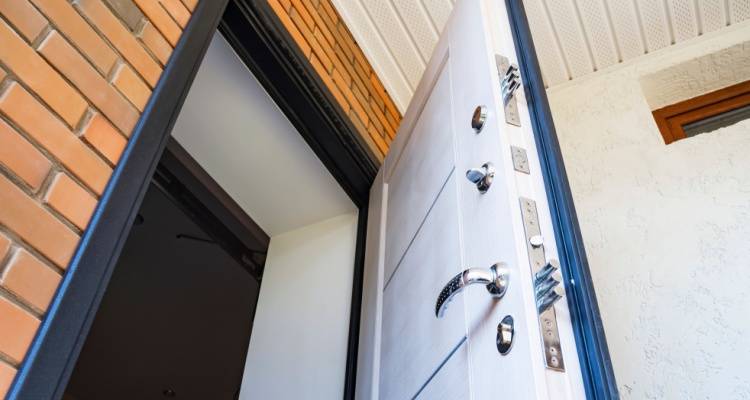
uPVC Security Door
uPVC is a type of plastic used in many construction projects. These types of security doors are not only durable but are generally cheaper than other security doors and come with great heat insulation qualities. uPVC security doors usually feature a multi-point locking system and integrated steel reinforcement.
Aluminium Security Door
Aluminium security doors, as with the steel type, are particularly strong and durable. While not the most inexpensive type of security door, they tend to feature multi-point locking systems either of the mechanical or electronic kind. Like steel security doors, they also provide thermal efficiency and a high degree of sound insulation.
Door Bars/Door Grill
If you are open to having window bars fitted, you may also wish to have door bars or door grills installed as a way to improve your home security. Door bars are metallic fittings which cover the front of a door. Door grills, on the other end, often provide a criss-cross appearance.
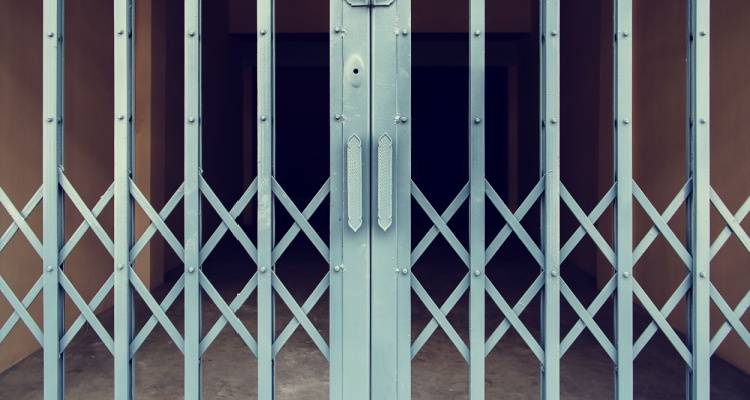
For safety purposes, door bars are not as easy to quickly open as door grills from the inside. There are door grills for many types of door designs, and this is partly why they are quite easy to install. Door grills may also be considered more aesthetically pleasing than door bars, especially as there is more room for a variety of designs.
Security Locks
We'll now take a look at different types of security locks. A security lock is a mechanical fastening device which can only be unlocked by the right key. Security locks provide more reliability against a break-in than ordinary locks. How they work varies from lock to lock. Deadbolts allow for a key to turn a cylinder which in turn moves an attached cam across so that the door can be locked.
On the other hand, a mortice lock fits the bolt of the lock into a mortice on the door. Broadly speaking, security locks as with any mechanical lock involves a lock bolt being moved across into an element fitted inside the door frame to prevent ease of access. Security locks provide increased security due either to the strength of the lock itself or/and its capacity to utilise the strength of the door.
Security locks are a great way of optimising the security of your doors. It can also deter burglars. If they were to attempt to a break-in, the realisation that there are security locks in place might make them leave on the belief that they won't be able to get through the door. In 73% of UK burglaries, doors are the access point which is exploited. With security locks, you significantly increase your chances of preventing a break-in.
Security locks can also be used for windows and cabinets. A BS lock is that which is considered a sufficiently thief-resistant lock in accordance with BS3621, a standard set by the British Standards Institute or BSI. For a lock to be considered a BS lock, it needs to pass a test of having 5 levers with at least 1000 key differs, anti-pick qualities, hard plates to protect against drilling, at least 20mm bolt throw into the door frame and measures in place to stop picking of the 5 levers.
Types of Security Locks
Deadbolt
A deadbolt lock is moved by turning a key without a spring being used. They are heavier and thicker than most latches which come with a spring. They tend to be made of steel or brass. Unlike most locks, they are not rounded or angled at the end of the lock. They are also a relatively inexpensive type of security lock. Pick locks are suited to exterior doors for a house.
They are usually used for exit doors and other interior doors in businesses, schools and more premises. Deadbolt locks are not a good choice for emergency doors since they can be more difficult to open. Ideally, you don't want to add a deadbolt to every exterior door in case of an emergency. Of course, this can limit the number of doors to few or none where a deadbolt lock will actually be suitable in your case.
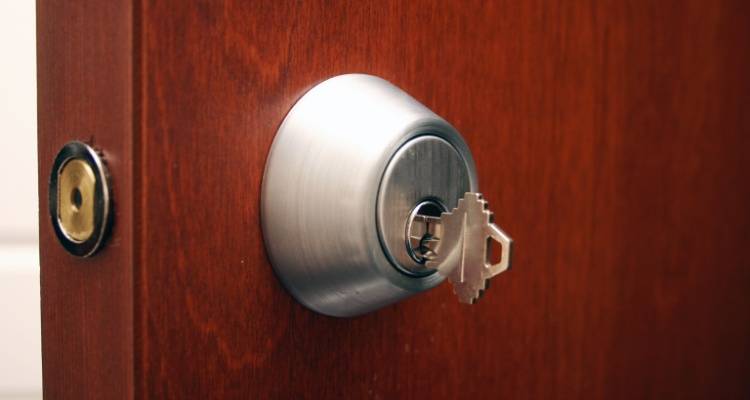
To fit a deadlock, first, you'll need to affix a template to a chosen position on the door. Next, markings will be needed for the lock cylinder and latch hole. Then it's time to bore the hole for the lock cylinder. The latch bolt hole can be drilled into the door's edge. Next, a latch bolt mortice must be cut into the edge of the door. The latch bolt faceplate will need to be positioned flush with the door's edge. Then, two mounting screws must be fitted into the faceplate before the lock's moving parts should be coated in a lubricant.
The latch bolt can be inserted, and the key portion of the lock may be pushed through the hole in the latch bolt. The inside cylinder must be fitted so that the screw holes line up with the external side. The two sides of the lock will need to be secured together. The door will then need to be shut, and a mark should be made on the doorjamb where the latch bolt touches.
Next, a mortice should be traced and cut on the door jamb for the strike plate. Then, a latch bolt hole needs to be created in the centre of the mortice. The strike plate may then be fitted. Now it's time to check the lock to ensure that it works. Deadbolts are not difficult to use but are easier to crack.
Cam Lock
A cam lock is a cylindrical fastener that is often used for cabinets. While they allow cabinets to be kept together securely, they do not affect their external appearance. If your home was to ever suffer a break-in, this would at least keep some of your precious items safe inside cabinets. They are also suitable for garage doors and window handles.
To fit a cam lock, generally, it needs to be inserted through the front of a drilled hole before a prong washer should be placed over the lock body with the prongs facing toward the surface. The cylinder nut then needs to be threaded and tightened before the stop cam, and straight cam may be attached. Finally, they can be secured with a screw and a lock washer.
Cam locks tend to be reliable and easy to use, hence why they are such a popular choice for cabinets. If you have a cabinet or drawer with especially important belongings you may want to fit a cam lock to add an extra layer of security, should your external security fail to stop intruders.
Mortice Lock
This type of lock is often used for exterior house doors although in some cases it can be used internally. Deadbolts, as discussed above, are a type of mortice lock as are sash locks. Mortice locks tend to feature a keyhole with a bolt that can move back and forth or a handle-operated mechanism for the latch. Mortice locks are a very popular choice for external house doors. If you need to secure certain rooms in your home, you may wish to have mortice locks fitted on interior doors too.
To fit a mortice lock, first, you'll need to ensure that the lock will fit the door. The right marks need to be made on the door. Then the door needs to be secured with a wedge before drilling can take place. Next, the length of the lock body should be marked with a strip of tape prior to several drill holes being established along the centre-line. A chisel may be employed to smooth the sides of the mortice shot such that the lock body can slide into the door with ease.
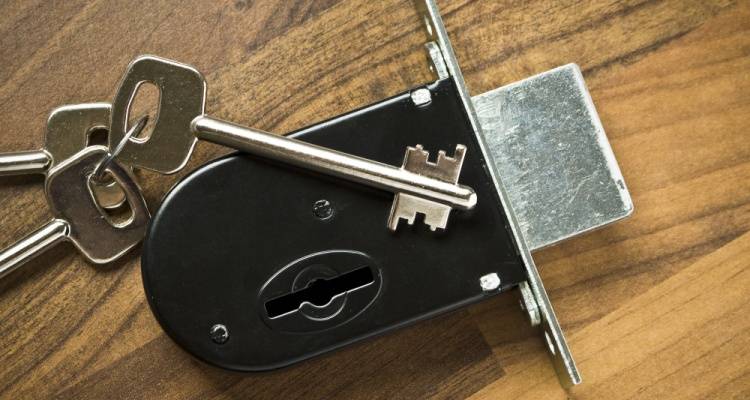
Then the lock should be fitted in place before the edge of the lock plate can be marked. Next, a recess needs to be made in the edge of the door in order to make the front plate of the lock flush with the door. For the next step, the lock should be held in position against the door face, and then a pencil can be used to mark the centre point of the handle spindle and keyhole. This step must be repeated on both sides of the door.
Then a drill can be utilised to bore holes through the door the same size of the keyhole. The drilling needs to occur based on where the marks have been placed. Drilling should take place on both sides to avoid splitting the material, particularly if it is a wooden door. The two holes should be stitched together. Finally, the lock body can be fitted into the door. A hammer can be used to gently tap the lock body into place. Then, the screw lock screws should be inserted to secure the lock.
The cover plates should also be screwed over the keyholes. If the door frame is new, a recess will need to be chiselled out for the strike plate on the door frame. If an old mortice lock is being replaced, the new strike plate must be installed in the same position as the previous lock. A decent quality mortice lock will be easy to use. Mortice locks are a great way to optimise the security of your exterior doors.
Interchangeable Core Cylinders
As the name suggests, these cylinders are interchangeable and may be moved from one lock body to another whether that be a padlock, mortice lock, cam lock and so forth. They have a figure-eight appearance and are available in a small or large format. If you want to save money on changing your lock types, then a core cylinder is a great choice to consider. The caveats of where interchangeable core cylinders should be fitted and not fitted are based on the type of lock body used. They are easy to use and refit in a new lock body.
To install an interchangeable core cylinder, the control key must first be fully inserted before pushing the core into the cylinder housing and then rotating the key 15 degrees to the right and inserting the core fully. Then the key must be rotated to the upright position before the control key can be removed.
Smart Locking System
For a very modern style of a security lock, you should consider a smart locking system. This type of lock utilises electronic and mechanical technology, whereby an authorised user's authentication can open the lock wirelessly. In other words, a traditional key is unnecessary. Smart locks can be considered a part of the growing internet of things.
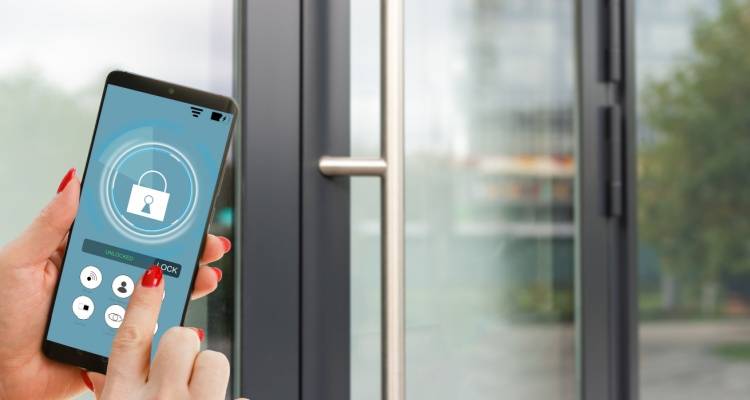
Some smart locks require Wi-Fi, while others do not. You'll want a reliable internet reception in the case of the former. Smart locks can act as a great addition to pre-existing smart home security. Smart lock technology is still being developed, and manufacturers are constantly changing and upgrading their designs to prevent cybercriminals finding ways to unlock them. As a result, traditional locks are still arguably safer as a rule of thumb, for the time being. On the other hand, smart locks are generally easy to use and have plenty of potential for the future.
Security Lighting
A great way to highlight potential intrudes or/and to deter them is security lighting. This refers to exterior lights which are particularly bright so as to achieve the aforementioned goals. Most security lighting is motion-activated meaning that detectors pick up on movement and turns the lights on in response. In other cases, you may have to turn the lights on manually.
Usually, security lighting is fitted at the back or front of a house to light up the areas of either garden closest to the property. Broadly speaking, security lighting is installed by first turning off the main power, then installing the light components and connecting the wires. They will also need to be wrapped with waterproof tape.
Aside from its obvious use, this tape is also valuable for reasons of insulation. Once the light wires are in place, the open-end wrench can be used to adjust the projection angle of the light based on your preferences. Finally, it's time to turn the power back on and test the lighting. Each security light product will have its own specific installation instructions.
Motion Activated
As you may have guessed, this type of security lighting is triggered by a motion sensor. If movement is picked up within a given range of the light, it will be turned on. Motion activated lighting is a great way to detect or/and scare away potential intruders throughout the night as it will jolt on if anyone is moving about in your garden(s) or driveway.
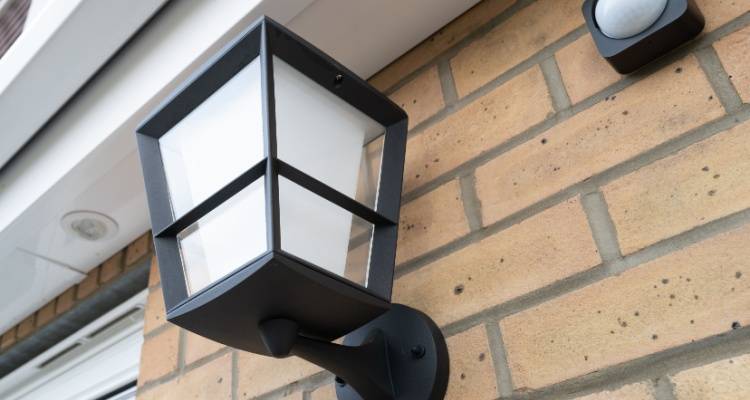
Solar
For a self-reliant and eco-friendly option, there is solar powered security lighting. It is designed to capture energy from the sun during the day so that it can light up without the need for batteries or wired power at night.
Timer
Unlike a motion-activated security light, a timer light turns on and off at different intervals, in most cases random. You may prefer this option as a motion-activated light may go off too often for you. This could happen, for example, if your security lights are too close to a road outside your house and there is plenty of activity throughout the night such as pedestrians and cars passing by which is setting it off.
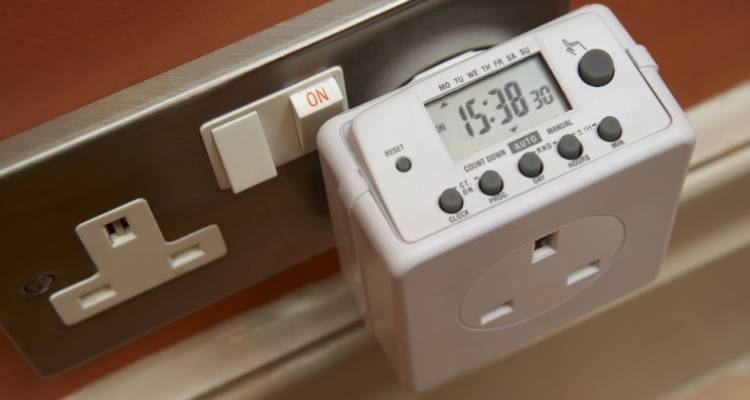
Light Sensitive
This type of security lighting is a great choice if you want to keep your security lights on all night. That is because they are designed to light up through the course of the night. They can detect how bright it is out and as it gets darker, they will turn on and remain on until the sun rises the following morning.
LED
LED security lights are an energy-efficient choice. They also provide a high level of performance and can produce a very bright light, should it be necessary.
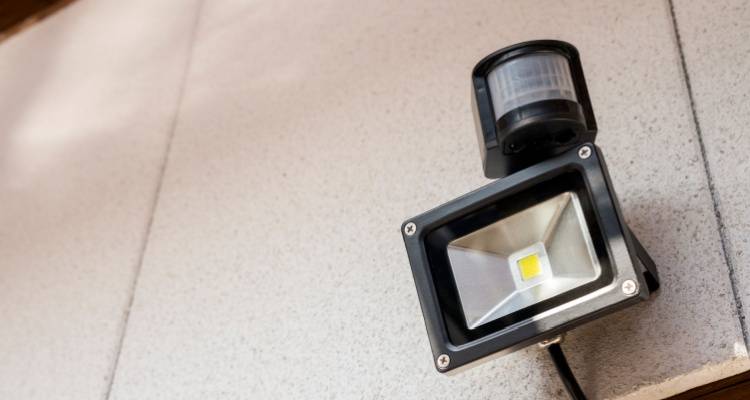
Halogen Flood Lights
As with large-scale floodlights, these security lights use halogen bulbs to light up a given area. They are connected to the mains power supply, which provides them with the energy to produce a large amount of light.
Smart Lighting
Smart lighting combines CCTV with security lighting. The surveillance cameras have a light fixture attached to them which is designed to record footage whenever the light is triggered. That way should anyone attempt to break-in to your house, even in the depths of night, you'll be able to capture any suspicious activity on camera.
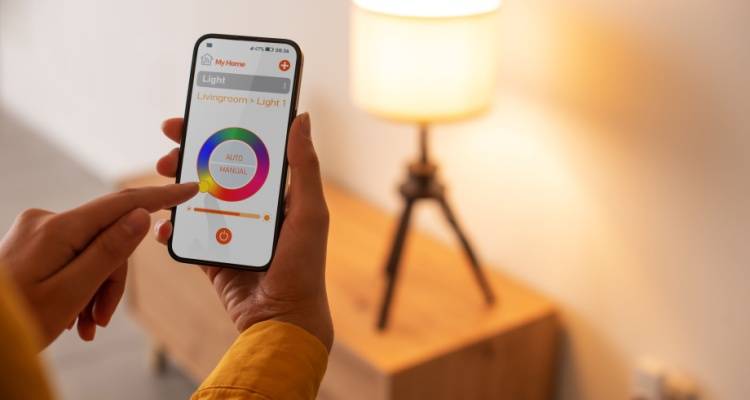
Secure Your Valuables
There are many ways you can secure valuable items within your home, whether it is jewellery, passports or other sentimental objects. Options include fitting a safe in your house or hiding them in places that might not be obvious for a burglar to search in.
Fit a Safe
The most obvious way to secure your valuables is to have a high-security safe installed, such as in your bedroom. A decent safe will make it very difficult for burglars to access your most cherished items. Given how challenging breaking into a safe can be, they probably won't even try especially as most burglars are in and out within ten minutes.
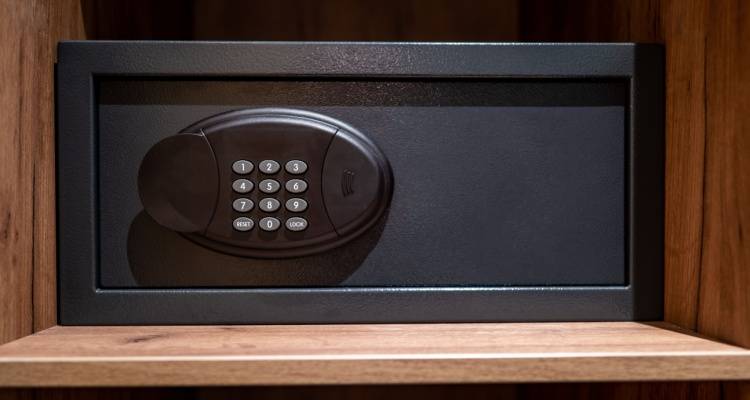
Out of Sight
Keeping important and vulnerable items out of sight is another way to increase your chances of holding onto more items. Keeping them in drawers, under the bed or otherwise out of sight makes them less likely to be taken by a burglar.
The Not So Obvious Spots
If you can't afford a safe right now or you simply don't have a room in it for all of your important belongings, there are spots in a home that can keep them more secure. For example, you might choose to put items in the attic as burglars almost never go into attics. If you want to go really out of your way, you may even choose to store very precious items beneath the floorboard!
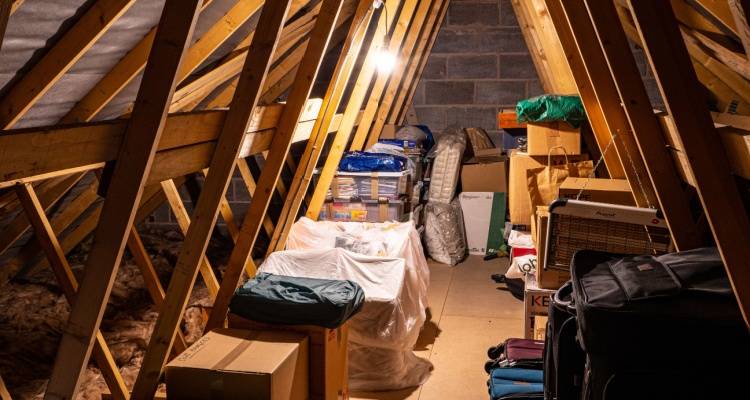
Garden Shed Security
One of the best ways to secure a garden shed is to add a highly secure lock. You should also consider replacing the door hinge, obscuring the windows and installing an alarm. What exactly you should do to secure your shed will depend on the type of shed you have and the distance it is from your home.
Replacing the door hinge will improve the door security of your garden shed as an old door hinge will make for a vulnerable access point. Obscuring the windows means that burglars won't know whether breaking in is of any value; thus, they probably won't try in the first place. As for fitting an alarm, this is a particularly great choice if you don't have any security lighting or if you do, but your shed is at the end of a long garden.
How to Prevent Burglaries
Install an Alarm
Your first line of defence against burglary should be an alarm. By installing a high-quality house alarm, you may deter burglars, especially if it is evident that it is a modern hi-tech alarm. You should fit a house alarm that is suitable for your home. A house alarm can be installed either as a wireless or wired alarm.
Fit Security Lights
You may also wish to install security lights. They can deter burglars by lighting up what would otherwise be a dark and obscure scene. Some types of security lights need to be fitted into the mains power supply, while others are battery-powered or self-powered in the case of solar lighting.
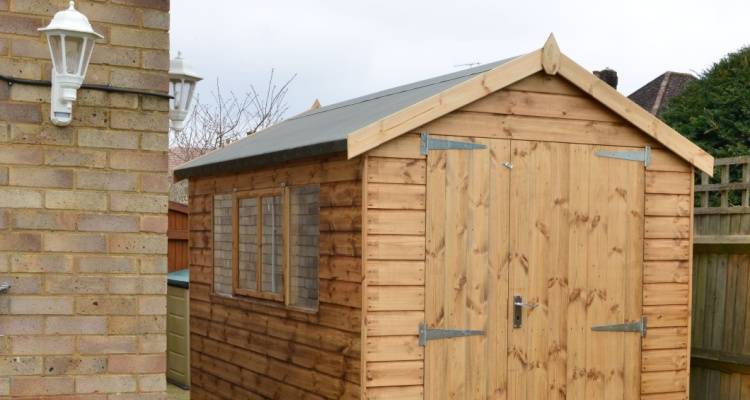
Buy CCTV
As discussed earlier in what was essentially a beginners guide to security cameras, they can deter burglars through their presence alone. This effect can be maximised if the camera is especially visible and there are many of them. How they should be installed will vary, such as depending on whether they are wired or wireless.
Security Doors & Locks
Another great way to protect your home for burglars is to have new security doors and locks fitted across the exterior of your property and perhaps even within. If potential intruders realise that you have security locks or/and doors, they may not even bother to attempt a break-in, to begin with.
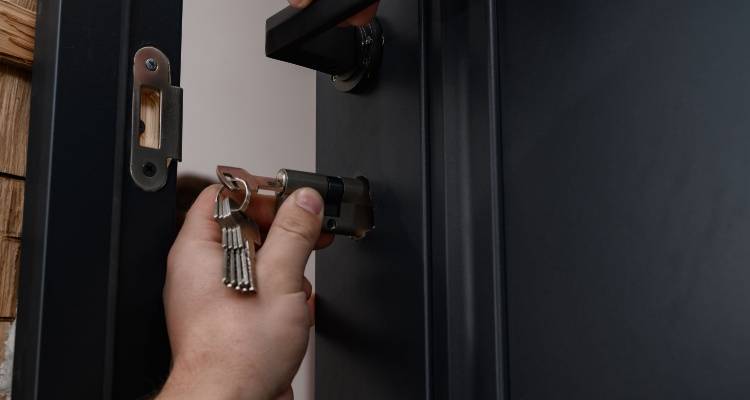
Windows Security
Also don't forget to consider different forms of window security whether it be window bars, security film, reinforced glass or window locks. Any of these can deter burglars as they will know a break-in will be less than straightforward.
Conclusion
There are many ways to keep your home secure, although whether or not you employ all of the security methods discussed in this article; it's essential to rule out any weak links in your home security. You should have a think about all of the security approaches we've looked at in this guide and consider how many you would like to have fitted based on your budget and requirements.
There are plenty of great home security products on the market for a range of different budgets. Make sure to do your research and find reliable home security products with credible positive reviews. We hope that our home security guide has helped you narrow your decision making as to what exactly is needed to optimise security in your home. Best of luck and stay safe!
FAQ
What is wired or wireless home security?
Wired security is connected via a network of wires and communicates through your landline telephone system. Wireless home security, on the other hand, uses a wireless network to communicate, such as Wi-Fi.
Do I need the internet for wireless alarms?
No. Not all wireless alarms use the internet.
How common are burglaries in the UK?
On average, a burglary happens every 106 seconds nationwide.
What is motion-activated security lighting?
These lights are set off if they pick up any motion within the path of their detector.
How long do security alarms last for?
If looked after well, a security alarm should last for about 20 years.
Sources
https://www.sutori.com/story/the-history-and-evolution-of-home-security-systems–ZrxPEMZA7u8wHNwtfWZsJoYo
https://www.shield-security.com/blog/how-do-i-begin-planning-my-home-security-system/
https://www.fireaction.co.uk/news/how-does-a-burglar-alarm-work/
https://www.bhg.com/home-improvement/advice/home-security/how-home-alarm-systems-work/
https://www.shield-security.com/blog/how-do-i-begin-planning-my-home-security-system/
<https://www.safewise.com/home-security-faq/monitored-unmonitored-systems/
https://www.northampton.gov.uk/info/200075/pollution/1094/noise-pollution—burglar-alarms
https://securityalarms.co.uk/kb/wireless-or-wired/
https://www.safety.com/pros-cons-professionally-monitored-security-systems/
https://www.angelsecurity.co.uk/blog/benefits-of-silent-alarms/
https://www.alarmnewengland.com/blog/pros-and-cons-of-security-cameras
https://www.telegraph.co.uk/recommended/tech/best-home-security-cameras/
https://www.cctv.co.uk/wireless-cctv-pros-and-cons/
https://www.swann.com/blog/wired-vs-wireless-vs-wire-free-security/
https://www.swann.com/blog/dome-vs-bullet-cameras/
https://www.cctv42.co.uk/shop/cctv-cameras-1/day-night/
https://www.caughtoncamera.net/news/10-reasons-need-ip-cctv-business/
https://character-security.co.uk/benefits-drawbacks-c-mount-security-cameras/
https://www.alarmnewengland.com/blog/window-security-bars
https://www.homedepot.com/c/ah/how-to-replace-window-glass/9ba683603be9fa5395fab9097b495ed
https://www.windowfilm.co.uk/residential/security
https://www.locksonline.co.uk/community/window-locks-explained.html
https://home.howstuffworks.com/home-improvement/household-safety/lock-picking1.htm
https://www.doityourself.com/stry/what-is-a-mortice-lock
https://www.rsgsecurity.co.uk/blog/news/interesting-uk-burglary-statistics
https://www.locksmiths.co.uk/faq/what-are-bs3621-british-standard-locks/
https://www.nottinghamlocksmith.org.uk/what-is-a-deadbolt-lock
https://www.familyhandyman.com/project/how-to-install-a-deadbolt/
https://www.dummies.com/home-garden/home-security/how-to-install-a-deadbolt-lock/
https://www.elitelockandkey.com/why-deadbolts-are-so-useful/
https://kitchencabinetkings.com/glossary/cam-lock/
https://www.lockshopdirect.co.uk/blog/the-top-7-uses-of-cam-locks-58
https://lockerlocks.ojmar.com/cam-lock-and-latch-locks/
https://www.ironmongeryworld.com/blog/how-to-install-your-own-mortice-lock/
https://www.locknet.com/newsroom/key-system-standard-cylinder-interchangeable/
https://kc.allegion.com/kb/article/how-are-interchangeable-cores-installed/
https://whatis.techtarget.com/definition/smart-lock/
https://securifix.com/why-are-security-doors-different
https://kav.london/the-benefits-of-security-doors-your-first-line-of-defense/
https://secure-house.co.uk/security/steel-security-doors/
https://www.britelitewindows.co.uk/news/what-is-the-difference-between-composite-and-upvc-doors/
https://www.britelitewindows.co.uk/news/what-is-the-difference-between-composite-and-upvc-doors/
https://dailyhomesafety.com/improve-upvc-door-security/
https://www.aluminiumtradesupply.co.uk/26393/guide-to-who-makes-the-best-aluminium-entrance-doors/#Features_of_the_best_aluminium_entrance_doors
https://www.safeguardsecurity.co.uk/door-grills/
https://www.itstactical.com/intellicom/physical-security/light-timer-home-security/
https://www.safe.co.uk/buying-guide/security-lights/
https://uk.rs-online.com/web/c/lighting/light-fittings-luminaires/halogen-floodlights/
https://snapgoods.com/7-best-smart-security-lights-with-camera/
https://www.theecoexperts.co.uk/home-security/burglary-statistics
https://holdersecurity.com/2015/09/09/how-long-will-my-homes-alarm-system-last/
|
Find Tradespeople & Save Money
MyJobQuote connects you with up to 3 available local tradespeople, so you can compare quotes & save money with ease.
|

|


